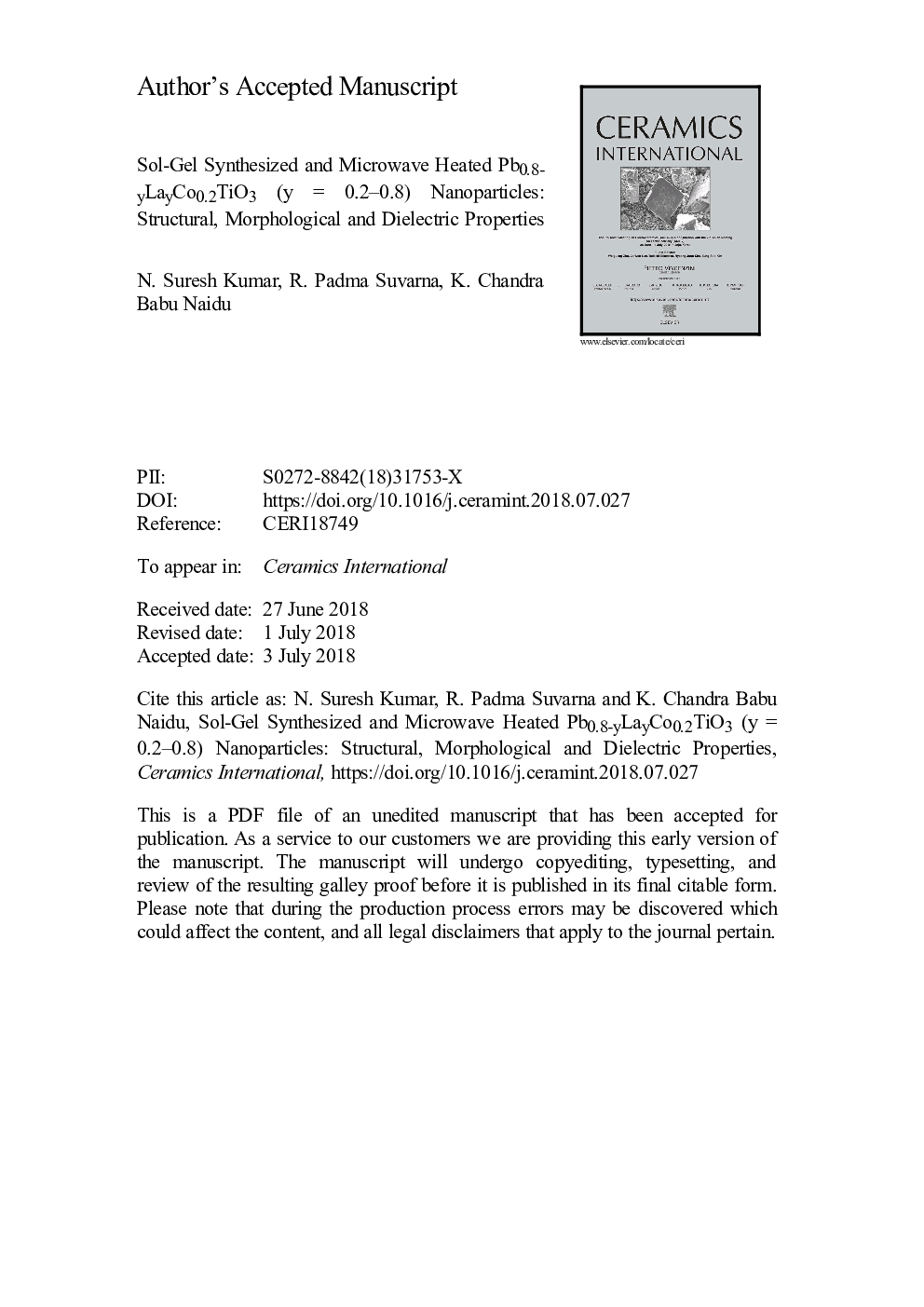| Article ID | Journal | Published Year | Pages | File Type |
|---|---|---|---|---|
| 8948502 | Ceramics International | 2018 | 30 Pages |
Abstract
In this work, the Pb0.8-yLayCo0.2TiO3 (yâ¯=â¯0.2-0.8) (PLCT) nanoparticles were prepared by sol-gel method and further subjected to microwave heating. The formed tetragonal reflection planes of PLCT samples were on par with PbTiO3 (PT) and lanthanum cobalt titanate (LCT) tetragonal phases. Especially, for yâ¯=â¯0.2-0.4, PLCT attained the PT structure while for yâ¯=â¯0.6-0.8, PLCT acquired the LCT structure. That is, the structural transformation occurred from tetragonal PT to tetragonal LCT phases at higher La-contents. The high resolution transmission electron microscope (HRTEM) and field emission scanning electron microscopes (FESEM) showed complete formation of nanofibers at yâ¯=â¯0.8 which may reveal drug delivery system applications. The Fourier transform infrared spectra (FTIR) were recorded in order to find the presence of metal oxide bonds. The dielectric properties evidenced that the transition temperatures (Tc) were found to be increasing from 713 to 783â¯K with increase of y-value. Furthermore, the temperature and frequency dependence of dielectric constant (εâ²), dielectric loss (εâ²â²), ac-electrical conductivity (Ïac), real (Mâ²) and imaginary (Mâ²â²) parts of complex dielectric modulus (M*) was described. The Power law was used to fit the logÏac versus logÏ plots in order to determine the dc-conductivity (Ïdc) and exponent (n) values of the samples at room temperature (RT). Later on, the Arrhenius plots (lnÏac versus Tâ1 plots) were drawn to find the activation energies. The results expressed the existence of two activation energies at low and high temperature regions due to slope change before and after Tc.
Related Topics
Physical Sciences and Engineering
Materials Science
Ceramics and Composites
Authors
N. Suresh Kumar, R. Padma Suvarna, K. Chandra Babu Naidu,
